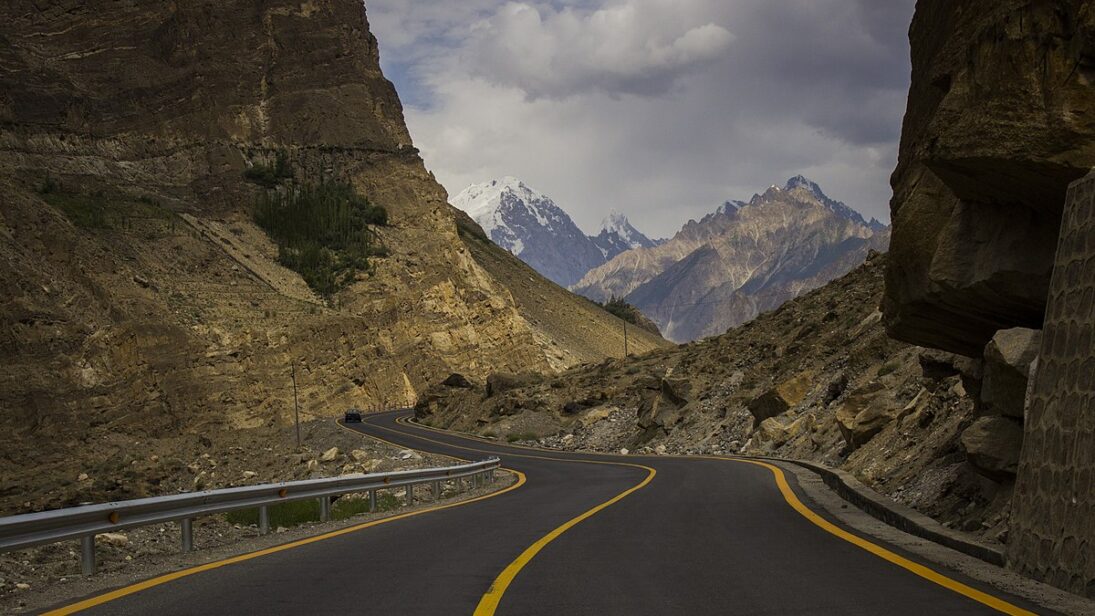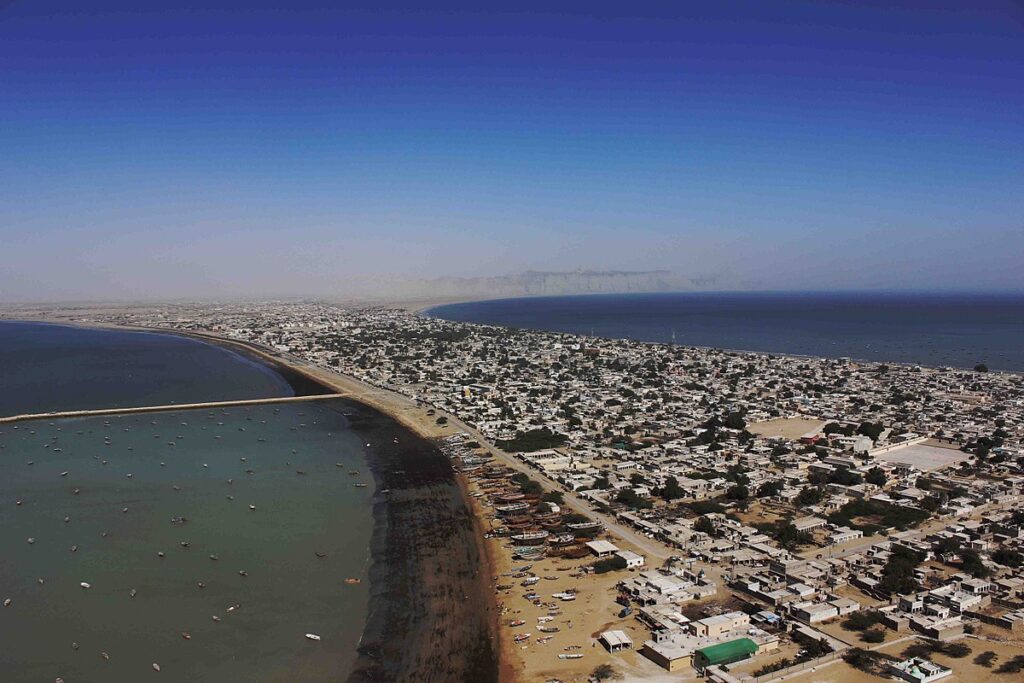
Since 2017, China’s global influence has only grown. Several factors have led to a surge in Beijing’s economic outreach including the far-reaching impact of the pandemic, shifts in U.S. foreign policy, and changes in U.S. domestic politics. These developments have reinforced China’s long-standing policy of investing and loaning capital to developing and underdeveloped countries, even in the face of negative publicity surrounding these loans and investments.
China’s South Asia strategy underpins its longstanding relationship with Pakistan as a significant regional partner that helps contain India’s regional growth and outreach.
Amid its extensive global presence, China’s focus on Pakistan continues to hold significance. In Part I of this series published in 2017, I demonstrated how Pakistan had been a lynchpin for China to leverage its regional influence. Since, this influence has deepened based on a broad range of economic and defense collaboration. Amid turbulent times in Pakistan’s domestic environment over the past five years, the Chinese government has retained its influence in Pakistan by building strong diplomatic ties with its Pakistani counterparts and providing support to Islamabad amidst political and economic volatility.
China’s South Asia strategy underpins its longstanding relationship with Pakistan as a significant regional partner that helps contain India’s regional growth and outreach. This follow-up piece will examine the state of Sino-Pakistan ties in the backdrop of regional developments over the last five years, with a particular focus on the future of the China-Pakistan Economic Corridor (CPEC) and the U.S. Indo-Pacific strategy. With U.S. influence waning in South Asia following the U.S. withdrawal from Afghanistan, there is greater room for a more positive Chinese presence in the region, which could be utilized to create a more symbiotic relationship with an important regional partner like India. Pakistan could also aspire to become a connecting bridge between China and the United States, as opposed to picking sides, which could escalate great power competition and endanger regional stability and prosperity.
Sino-Pakistan Economic Cooperation
This May marked the 72nd anniversary of Sino-Pak bilateral ties. In the 4th edition of the Pakistan-China Strategic Dialogue, both sides expressed their existing and continued support for each other on economic, political, and strategic priorities. Nearly it’s 10-year anniversary in July 2023, CPEC’s progress was especially highlighted by the Pakistani and Chinese foreign ministers. This public show of support from officials came in response to the continuous domestic and external criticism and speculation regarding progress on various CPEC projects.
According to the Chinese Consul General in Lahore, China and Pakistan have supported each other through challenging times, including the COVID-19 pandemic and debilitating floods in Pakistan in 2022. Chinese naval vessels provided life-saving assistance to Pakistan’s diaspora in Sudan after the civil war broke out while also providing crucial financial assistance amidst Pakistan’s depleting balance of payments crisis. High-level bilateral visits and cooperation between security forces reinforce this partnership.
Additionally, CPEC, a vital component of the Belt and Road Initiative (BRI), will mark a decade this summer. Official sources show that the project has created 236,000 direct jobs while creating 155,000 employment opportunities for the local population. Despite the unstable and unpredictable political atmosphere within Pakistan, 11 Joint Cooperation Committee meetings have taken place, with the twelfth scheduled for July. However, it is evident that the project has not transformed Pakistan’s economic landscape, as exaggeratedly claimed by both sides in the past.
Pakistan’s internal institutional weaknesses, ineffective planning, and implementation gaps have stagnated CPEC’s progress. While barriers in CPEC implementation have not demoted Pakistan from its former position as the lynchpin of China’s South Asia policy, stagnation does highlight the need for significant improvement in Pakistan’s economic outlook. Serious steps must be taken domestically to achieve the promised prosperity, which may still prove to be elusive without substantial progress.
Sino-Pak Defense Cooperation
China and Pakistan share no formal treaty or alliance. However, the components of their relationship may be seen as a burgeoning strategic partnership. Sameer Lalwani categorizes the increasing rate of Sino-Pak defense cooperation as a ‘threshold alliance,’ which means an ‘almost’ alliance, especially due to China’s hesitation towards forging formal alliances.
Years of steady growth in defense collaboration have resulted in compatibility and intraoperative ease between China and Pakistan. Amidst Pakistan’s political uncertainty, as recently as last November 2022, China has provided Pakistan with its latest technology, such as an SLC-18 radar system and a Continuously Operating Radar System (CORS), to enhance Pakistan’s precision strike capabilities. With rising terrorism under the Afghan Taliban, a growing India-U.S. strategic partnership, and increasing regional security threats, it is sensible for both sides to increase their defense and strategic partnerships. The potential use of the Gwadar port as a Chinese naval base could be a consideration amidst changing geopolitical contingencies.

Sino-Pak Ties and the U.S. Indo-Pacific Strategy
The U.S. Indo-Pacific Strategy revitalized the Quad, increased cooperation with ASEAN, forged new security arrangements like the AUKUS, and adopted a new Indo-Pacific Economic Framework. For years, this strategy has aimed at deepening the U.S. footprint in Southern Asia while actively incorporating partnerships and methods to curtail Chinese economic and strategic expansion within this region.
India is the cornerstone of this strategy, which aims to contain China’s influence in all domains, particularly in the Indian Ocean. Against this backdrop, India has vehemently opposed the propagation of CPEC, which it views as a direct threat to its land and maritime sovereignty. However, even with U.S. backing, Indian military and naval capabilities are inadequate to undermine Chinese regional ambitions satisfactorily. In order for the strategy to effectively contain Chinese regional advances, the IPS must broaden its approach to garner support from other regional countries along with India.
From Pakistan’s perspective, Washington’s Indo-Pacific strategy solely relies on propping up India as a regional threat to China’s expansive designs in South Asia. Pakistan and other regional countries do not feature prominently in the IPS, even while Indian capabilities alone may not be enough to contain Chinese activities in the region and could be used against Pakistan. While Islamabad expected that changing regional contingencies could garner Pakistan’s inclusion in the IPS, Pakistan’s inclusion could jeopardize Chinese designs in the region and may also negatively impact the China-Pakistan bilateral relationship. While Islamabad seeks options to maximize leverage, greater alignment with the United States on Indo-Pacific security is unlikely for now.
From Pakistan’s perspective, Washington’s Indo-Pacific strategy solely relies on propping up India as a regional threat to China’s expansive designs in South Asia.
Conclusion
As the United States has withdrawn from the region, China is filling the void through its collective and country-specific approach. However, the extent to which China’s approach aligns with or differs from the previous U.S. approaches is still unfolding and will shape the regional power dynamics and concerns of other nations. The United States should reconsider its India-centric approach toward the region because of its potential to imbalance the Sino-Pak relationship. Instead of compelling regional partners to pick sides in rising great power competition, the United States and China could involve India and Pakistan to collaborate on shared emerging challenges, such as climate change, rising poverty, and terrorism.
Also Read: Pakistan and the IMF: Ongoing Politicization and a Burgeoning Trust Deficit
***
Click here to read this article in Urdu.
Image 1: Karakoram Highway via Wikimedia Commons
Image 2: Gwadar city via Wikimedia Commons


